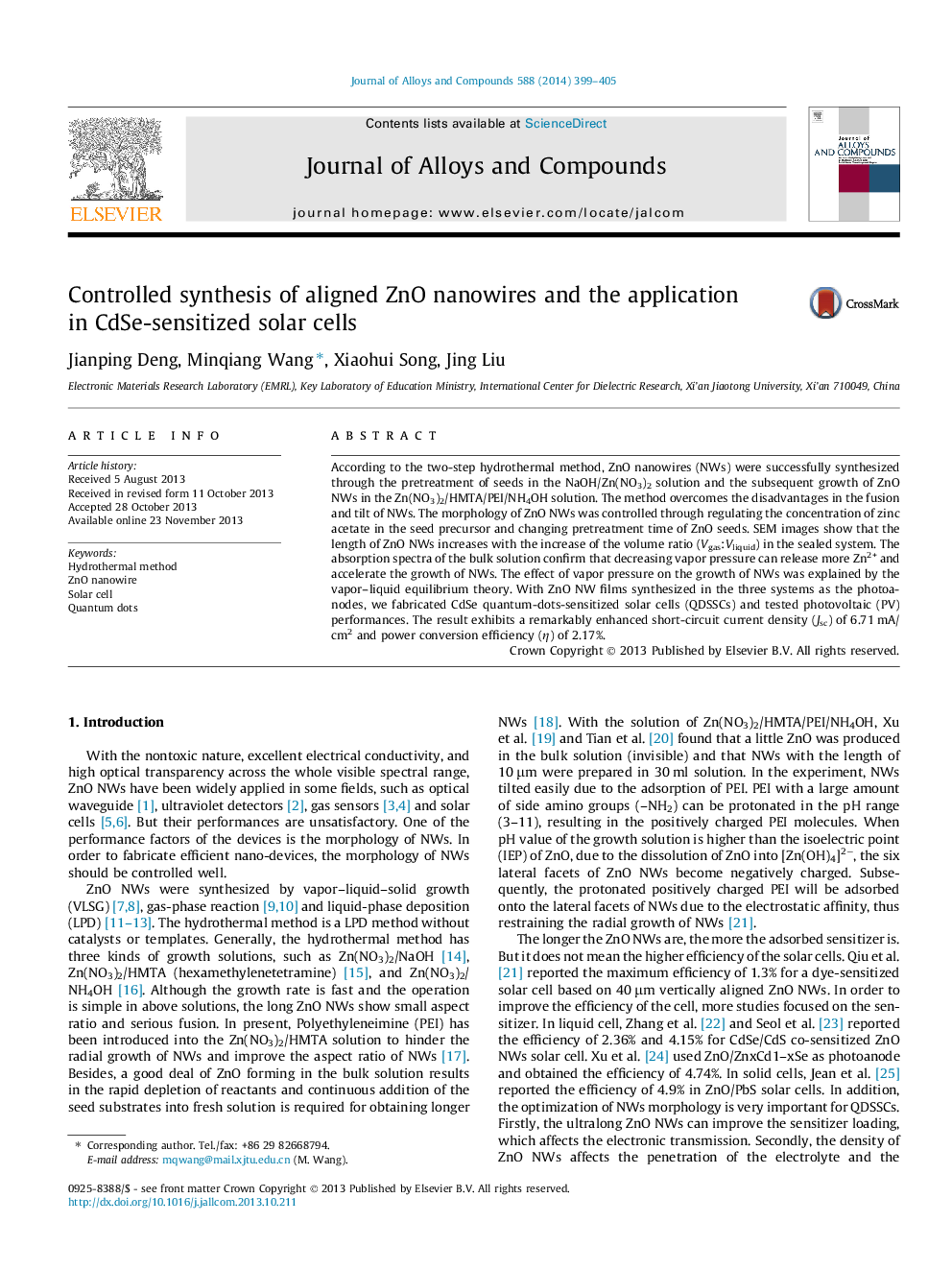| Article ID | Journal | Published Year | Pages | File Type |
|---|---|---|---|---|
| 1612205 | Journal of Alloys and Compounds | 2014 | 7 Pages |
Abstract
According to the two-step hydrothermal method, ZnO nanowires (NWs) were successfully synthesized through the pretreatment of seeds in the NaOH/Zn(NO3)2 solution and the subsequent growth of ZnO NWs in the Zn(NO3)2/HMTA/PEI/NH4OH solution. The method overcomes the disadvantages in the fusion and tilt of NWs. The morphology of ZnO NWs was controlled through regulating the concentration of zinc acetate in the seed precursor and changing pretreatment time of ZnO seeds. SEM images show that the length of ZnO NWs increases with the increase of the volume ratio (Vgas:Vliquid) in the sealed system. The absorption spectra of the bulk solution confirm that decreasing vapor pressure can release more Zn2+ and accelerate the growth of NWs. The effect of vapor pressure on the growth of NWs was explained by the vapor-liquid equilibrium theory. With ZnO NW films synthesized in the three systems as the photoanodes, we fabricated CdSe quantum-dots-sensitized solar cells (QDSSCs) and tested photovoltaic (PV) performances. The result exhibits a remarkably enhanced short-circuit current density (Jsc) of 6.71 mA/cm2 and power conversion efficiency (η) of 2.17%.
Related Topics
Physical Sciences and Engineering
Materials Science
Metals and Alloys
Authors
Jianping Deng, Minqiang Wang, Xiaohui Song, Jing Liu,
